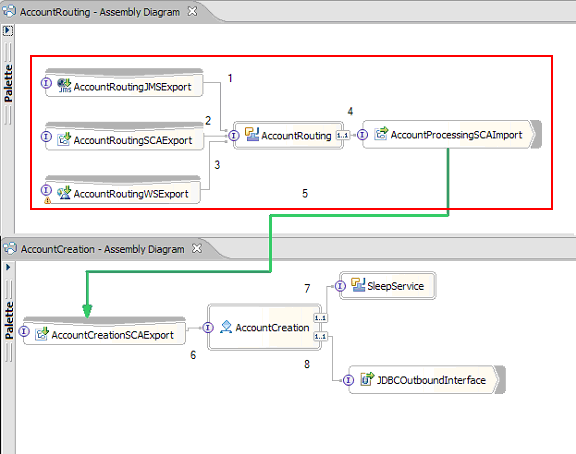IBM BPM, V8.0.1, All platforms > Authoring services in Integration Designer > Troubleshooting > Error prevention as part of application design
Connectivity groups
A connectivity group represents a specific pattern of behavior found in an SCA module.
Create connectivity groups to represent the possible request sources for the system.
In a connectivity group you:
- Put all the logic to get the inbound data into one module
This is also true for outbound data when it is going to an external system or legacy system
- Put all the logic to connect and transform the data into one module
All the other modules can now use a standard set of interfaces and not have to worry about extra transformations.
The connectivity group will not contain stateful component types like long-running business processes and Business State Machines. These connectivity groups provide encapsulation and isolation of the specific endpoint's integration requirements. Commonly, WebSphere ESB mediation modules are used for this purpose as they represent convenient ways to implement "infrastructure" related tasks.
The concept of connectivity groups also provide a convenient way to quiesce the system in case there is a need for recovery. Because the connectivity group module is stateless, the module can be temporarily stopped thus cutting off the inbound flow of new events while the system finishes processing the events it has.
If you want to stop the flow of inbound events, then the connectivity modules should not support inbound and outbound in the same module (even though the same EIS system may have both inbound and outbound). If inbound and outbound support are in the same module, then the outbound is turned off with the inbound. This may cause internal work to stop from completing. Consider separating inbound and outbound in this case.
When the system is recovered and able to process new work, these modules can be restarted.
The module that is outlined in the following screen capture is considered part of a connectivity group.

Connectivity groups can be used for input from an external source or an existing system such as SAP or CICS . Or for new work from a web browser-based clients.